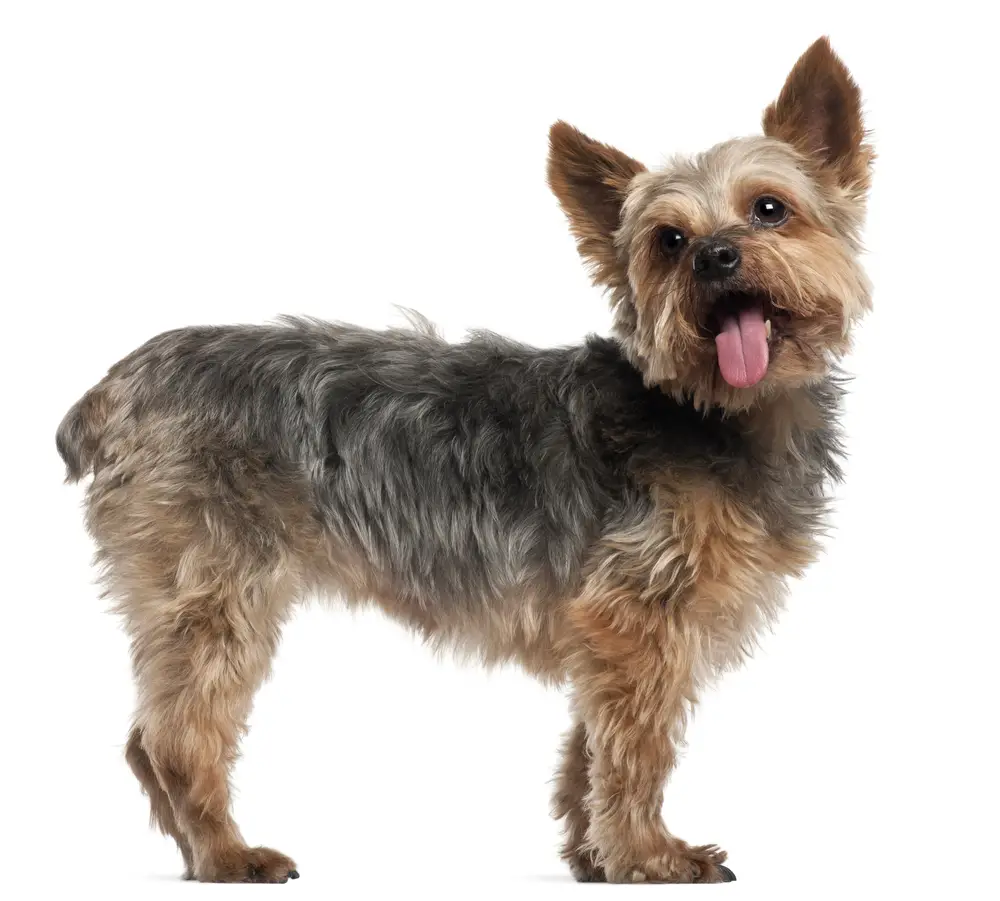The Colors of Yorkshire Terriers
The Colors of Yorkshire Terriers
Yorkies have blend of four colors for this breed which comprises black, tan, blue, and gold not taking into account the few rare colors that happen!
A yorkie puppy has different coloring compared to adults. And this is one of the factors which allows people to identify their age quickly. Puppies have black and tan coloring, whereas the adults are of blue and gold. Adult yorkies will usually have blue coloring which cover the back of the neck down the tail. Although sometimes this breed will have mixed color-fill with black as a highlight.
Why the Yorkshire Terrier breed is unique
Every purebred yorkie carries specific and unique genes that cause it’s coat coloring to go from black to blue over the course of it’s life.
The Colors of Yorkie Puppies
All yorkie puppies usually are born with black and tan coat coloring. There will be a slight combination of these two colors which significantly differs from puppy to puppy. In many cases, most puppies have tan color in specific areas like the eyebrows or just below the earlobes and in some cases, on the bottom of the tail.
At what age do the Yorkshire Terriers breeds change its coat colors?
Typically, colors change when your yorkie is about six months old. The color change differs from dog to dog though. Yorkie adults will fully develop their colors at the age of one or two years old, though some can take up to three years. In some cases, an older Yorkie will have an extra silver shade on its hair strands.
What color does Yorkshire Terriers typically change?
The yorkie color conversion is well documented. It undergoes a moderate change in color when the puppy turns into an adult. With age, yorkies will develop more gold or tan instead of the black coloring, which makes it more radiant than a puppy. The black colors in the puppy will change into blue (bluish-black) with years. One can see a hint of blue color in dog breeds, but for yorkies, it is deep steel blue or a shiny silver shade.
In sporadic cases, a yorkie may have a shade of red color on its legs, wherein the tan or gold changes to a vibrant, shiny red tint. In some more exceptional cases, the tan color on the coat may be more prominent, giving the yorkie a small shade of blue or none at all.
For the most part, a yorkie that goes through the natural color transition can produce a different level of intense colors. It can vary from light to deep shades. Often, dark is confused for black hue as the tint is prominent only in bright daylight. The tan color of the yorkie breed will gradually turn to gold (brownish-gold); gold is merely a more vibrant shade of the tan. As it develops, the tan color on the yorkie will remain darker at the roots of the hair and lighten as it reaches the tips.
All the four colors may develop when the yorkshire terrier puppy grows into an adult where the blue shades replace the black, and the tan substitutes gold tints. The natural hair color of the yorkie remains unchanged; it is only the new ones that develop.
But of course, the yorkie breed also shed puppy hairs, and as it matures, adult coat grows in its place. If such natural process is non-existent, a four-year-old yorkie would have the same layer of fur as when he was a puppy. Now, that is not healthy and repugnant. Like your hair, the yorkshire terriers coat is also in a continuous phase of renewal; it grows, it stands, and it falls. The hair-shedding process occurs gradually over a more extended period compared to other dog breeds, which means you can barely notice any strands of hair falls with your yorkie at any point in time. Still, it is entirely okay to see a few hairs in the brush when grooming your yorkie. Besides, you can also certainly see how much tan or black strands your yorkie has just by having a look at the grooming brush.
Unique Shades and Combinations
While remaining rare, some of the purebred Yorkshire Terriers genes have little blue-black shades. Most of these breeds rarely produce an intense blue-black with tiny tan-gold hues as the blue-black genes stay dormant thus, giving us some Yorkshire Terriers which are entirely tan, silver or gold. Still there are some Yorkie with a small shade of blue-black that trails down the back of the hair.
Yorkie Coat Color Conclusion
While it’s true that the Yorkshire Terriers breeds are genuinely adorable, it is best if you don’t breed them. The main reason for such advice is that, if such breeding with other non-standard breeds continues, it would ultimately lead to the elimination of the standard coat colorings of this unique breed.
If such practice persisted, the distinct Yorkie breed would lose its existing standard value that people admired and held for since centuries. Others advise that poor-colored kinds may have specific genetic flaws that could pass down to their offspring. However, this is just a hypothesis, and it does not hold any truth that standard-colored Yorkie breeds has any health issues at all.
One essential factor worth noting is that a standard colored Yorkshire Terriers can register with the AKC, though the coat color does not qualify in participating at the dog show events.

